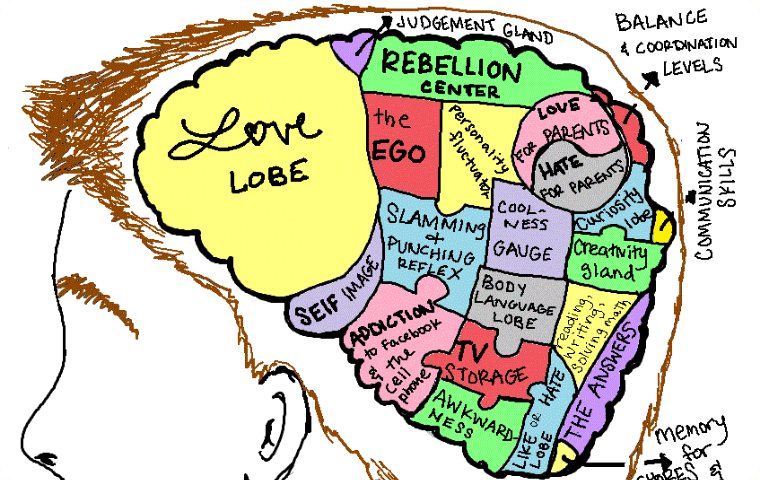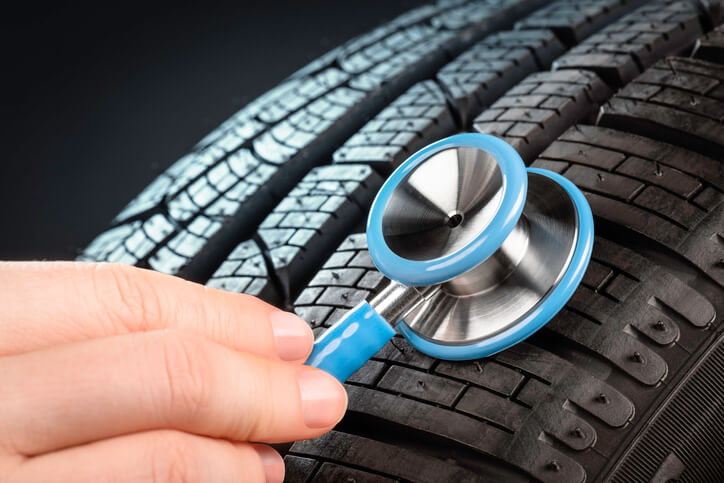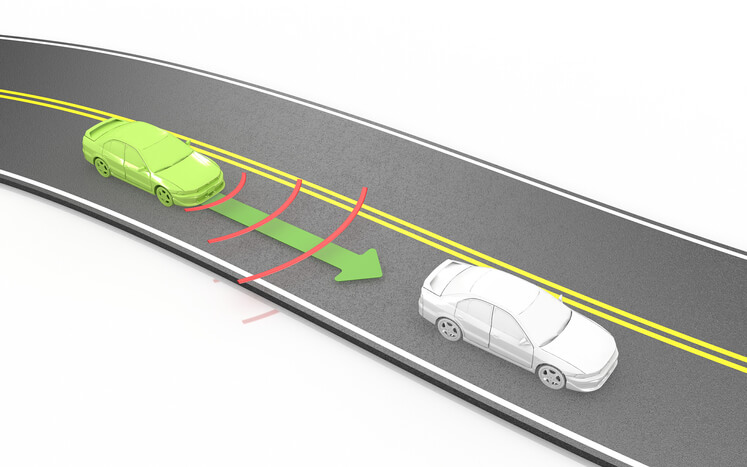There are few things more synonymous with life in the United States than the freedom of the open road. Our vehicles are a legal extension of our homes and are an essential part of day-to-day life for many.
Given that the portion of our population 65 and older has grown by nearly 35% in the last decade and will only continue to do so, figuring out how to keep older drivers on the road safely is a timely problem.
Many people are aware of the increased challenges older drivers face, but how impactful are they in increasing risk, and how can we overcome them?
The effects of aging
It’s no secret that we go through changes we get older. Losing function and control over our bodies is enough of a challenge. Impairments including joint mobility, mental cognition, vision, and hearing can have a profound impact on your daily life.
However, these changes can also greatly influence our ability to drive. How large an effect, and what can be done about it? These are questions that, as a society, we’re working to answer.
What we know is that older drivers account for around 20% of all traffic fatalities, according to the NHTSA. While age-related decline in several necessary driving functions is at least partially responsible for this statistic, that understanding may not paint the whole picture.
We also know that reduced mobility due to an inability or unwillingness to drive results in a significantly lower quality of life. The loss of the freedom drivers have enjoyed their entire lives is a challenging experience, leaving many older drivers feeling isolated and unable to care and provide for themselves.
A loss of independence can have devastating consequences on their mental health and their loved ones.
Families of these drivers often must fill the gaps in transporting and providing for their loved ones. This added stress can adversely affect their health as well.
Society at large also feels the loss of independence for any individual. Resources are needed to provide transportation, necessities, and anything else seniors can no longer provide for themselves, and that’s a cost that we all must pay.
older drivers only need to give up their licenses in relatively few, moderately extreme situations.
Follow the science
A study conducted by the Monash University Accident Research Centre set out to determine what’s going on. They sought to determine what factors contribute to elderly crash risk and whether age-related decline was entirely to blame.
In practice, this is a very complicated question to answer. Variability in driving distance, rural vs. urban environments, local traffic safety laws, and access to safer vehicles and equipment play a role in older driver risk.
One key factor that was consistent across all variables was visual acuity. Of those studied, drivers with more than a 40% limitation in their effective field of view were over twice as likely to be involved in a collision.
While this is statistically significant, it alone does not account for the increased perceived risk to all older drivers. Researchers found that impairment, mental or physical, plays an important role. However, they also noted that older drivers experiencing various forms of impairment drove less, in terms of miles driven, than their counterparts.
This finding produced an interesting concept: older drivers seem to be effectively self-regulating their driving volume based on their declining ability. What it cannot account for, however, is the level of awareness of the means available to combat these impairments and continue driving safely.
Researchers found that in addition to this self-regulation, many older drivers will not seek to renew their licenses, fearing that they will fail any evaluation requirements. Many capable drivers may be getting left behind between the self-regulating group and those who do not seek to renew their licenses.
Monash’s findings included that a great deal of this perceived “high risk” group might be perfectly capable of safe driving. They might just need a little help.
What if people were able to address their impairments to continue driving safely? What if increased awareness and resources could alleviate even a small percentage of older drivers’ issues and get them safely back on the road?
more resources are available than ever to help you find a solution to your needs.
Aging and risk factors
Most people are probably familiar with the physical decline that can occur due to age. Things such as a decrease in physical mobility, mental acuity, sight, and hearing, might keep many older drivers off the road.
However, before considering the impacts of these impairments, we need to address another culprit. Medications.
A staggering 80% of older adults take at least one medication every day. The side effects of prescription and over-the-counter medications are a well-known factor in motor vehicle crashes and fatalities.
In fact, per the NHTSA, an alarming 10% of drivers during daytime driving hours tested positive for prescription or over-the-counter medications.
Many prescriptions can cause acute nausea, drowsiness, or affect coordination and judgment. Many can mirror the effects of alcohol or illicit drugs when it comes to higher risk factors while driving. Medications from the opioid family can be especially hazardous behind the wheel as they can drastically affect cognition, reaction time, and alertness.
Even over-the-counter medication can be dangerous. Symptoms such as an irregular heartbeat, dizziness, drowsiness, and more are possible reactions to various medicines available without a prescription.
What’s more, is that the combination of prescription, over the counter, and anything else that might be in a driver’s system, such as caffeine or alcohol, can interact in dangerous and unexpected ways, making it all but impossible for anyone of any age to operate a vehicle safely.
In addition to the increased risk of impairment while driving, doing so could also break the law. Driving under the influence of even over-the-counter medication could be illegal, depending on your state and the medicine in question.
Anything that results in driving impaired could result in a citation or arrest, even if you’re lucky enough to have not gotten into a collision.
Now, let’s talk about the physical limitations some older drivers face. Generally, these can are broken down into 3 categories:
- Strength, range of motion, and flexibility
- Reaction time and manual dexterity
- Mental cognition and decision making
Issues with any of these can lead to big problems behind the wheel. For example, many older drivers find it difficult to move their foot from the gas pedal to the brake. Others might find it too painful or are simply unable to move their head from side to side to see where they’re going or check for hazards.
Losing dexterity and reaction time can similarly lead to problems. Anything from not hitting the brakes quickly enough to fumbling with steering or other vehicle controls can easily cause a collision.
The same is true of a decline in cognition and decision-making. On the road, decisions must be made quickly, in some cases incredibly quickly. A lack of decisiveness can be deadly.
Similarly, cognitive agility is critical. A foundation of safe driving is to expect the unexpected. Impairment in one’s cognition can make this already difficult task feel nearly impossible.
So, if an older driver is experiencing any of these forms of impairment, what options are available to mitigate or overcome them? These days, quite a lot.
drivers with more than a 40% limitation in their effective field of view were over twice as likely to be involved in a collision.
Impairing impairment
Options to address age-related issues are more prevalent now than ever. First and foremost, there are a lot of resources available online. There is more information at an older driver’s fingertips from the NHTSA itself to the legendary Mayo Clinic and the CDC than ever before. Here are some tips:
- Consult with your doctor — many issues an older driver might experience can be addressed by consulting with a physician. Have trouble seeing on the road? Perhaps something as simple as a prescription for new glasses or contacts can fix it.
- Are you losing mobility and flexibility? Physical therapy might help you overcome it and still be able to drive normally. Your doctor can help you with all sorts of declining performance. Ask them about it on your next visit.
- If you’re getting confused behind the wheel, take advantage of a GPS application, and plan your route from departure to arrival. Try avoiding left turns and freeways where possible. GPS can help with that too.
The most important thing is watching for and monitoring these changes within yourself and your driving abilities. Family members should also show an interest in their loved ones driving capabilities and help when necessary.
After consulting with your doctor and family, you may find you still need some additional assistance. That’s where a driver rehabilitation specialist comes in. These professionals have received specific training to diagnose driving issues older drivers may face and are experts at finding ways to overcome them.
They may very well recommend accomplishing this is to either adapting your vehicle to your specific needs or considering acquiring a new one. New cars have a variety of new safety systems that, while not explicitly intended to help aging drivers, can provide a great deal of assistance safety oversight through intelligent and automated driving systems.
Features such as lane keep assist, automatic braking, backup cameras, collision detection, and more can all help an older driver stay on the road safely. Additionally, aftermarket vehicle modifications can also help.
For example, if you have trouble operating pedals with your feet, you can install hand controls. Have difficulty seeing over the steering wheel or far enough ahead to see and predict hazards? A simple seat cushion or raised seat apparatus could alleviate the problem.
There are as many custom additions to vehicle safety features and controls as there are reasons to need them, but unfortunately, this can often be an expensive proposition. Your driver rehabilitation specialist should be able to help you find government and private organizations and programs that are willing to help.
Groups like the National Mobility Equipment Dealers Association can help you apply for grants and rebates for needed work to your vehicle to adapt it to your needs. Your auto insurance may also cover some significant upgrades, as do workers comp and a variety of nonprofit organizations. Though it can be a dauntingly expensive task for many families, more resources are available than ever to help you find a solution to your needs.
Research indicates that older drivers only need to give up their licenses in relatively few, moderately extreme situations. For many, it’s not about abstaining from driving altogether but finding new ways to compensate for the natural changes occurring in your mind and body. With the help of your physician, family, and a driving consultant, you should be able to find a solution that works for you.
As a society, we should keep our older drivers on the road. We owe it to our seniors and ourselves to keep everyone happy, healthy, and enjoying the freedoms of the road.
Liam Hoch researches and writes about safe driving for DriverZ.
Having been a passenger in multiple near-catastrophic vehicle collisions, Liam knows first-hand the dangers of distracted, reckless, and unsafe driving.
Passionate about our core principles of helping to make safer drivers and, ultimately, saving lives, Liam stays at the forefront of driving safety innovation and research.

















